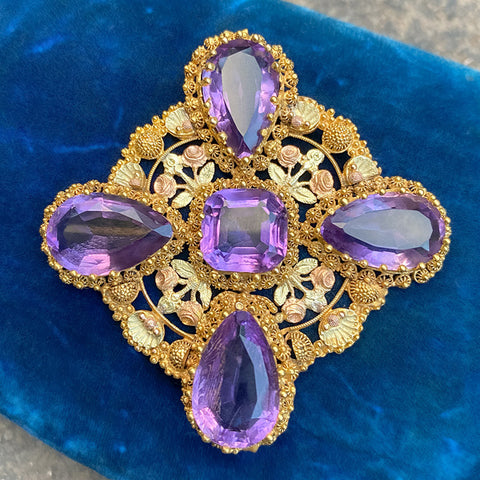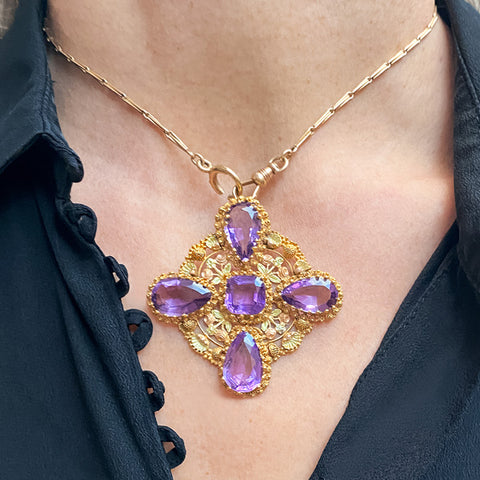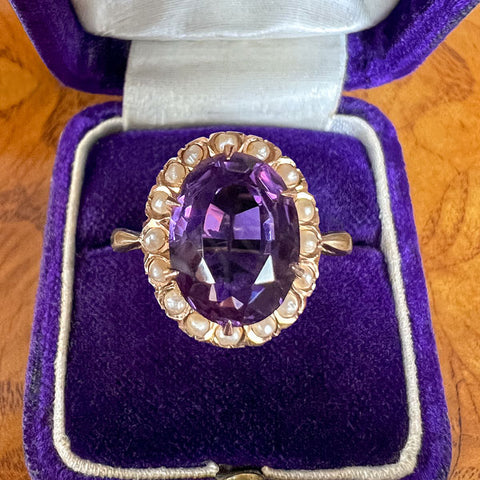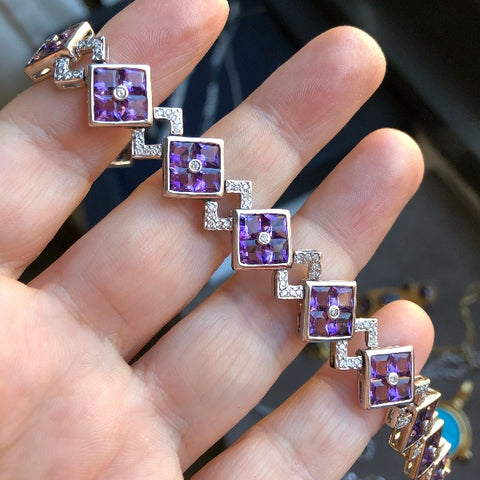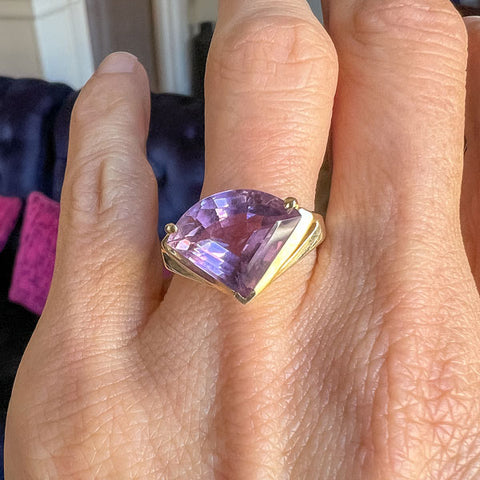Categories
Categories
Ancient Origins and Etymology
Deep purple amethyst, February's birthstone, has captivated humans for millennia. Its rich purple color evokes connections to royalty and spirituality across diverse cultures and time periods. This member of the quartz family earned its name from the Ancient Greek "amethystos," meaning "not intoxicated" – a reference to the belief that the stone could prevent drunkenness.

Royal and Noble Heritage
Ancient civilizations prized amethyst as highly as diamond. Egyptian royalty adorned themselves with elaborate amethyst collars and pectorals, often combining the purple stone with gold and lapis lazuli. Roman nobility not only carved drinking vessels from amethyst crystal, but also set amethysts into signet rings and ceremonial brooches. The stone appears in royal collections throughout history, including Catherine the Great's famous parure featuring massive amethysts surrounded by diamonds, to Queen Mary's amethyst tiara, now part of the British Crown Jewels.
Religious and Spiritual Significance
Medieval European clergy wore distinctive amethyst rings as symbols of piety and divine connection. The stone was typically set in gold with a simple bezel to emphasize the stone's natural beauty. This ecclesiastical tradition birthed the bishop's ring, which traditionally features an oval amethyst in a simple gold setting. The association with spirituality wasn't unique to Christianity – Tibetan Buddhists have long used amethyst malas, or prayer beads, in meditation practices, while ancient Greeks and Romans linked the stone to the gods Apollo and Dionysus.

The Victorian Revolution
The discovery of extensive amethyst deposits in Brazil in the 19th century dramatically increased its availability. This transformed it from a rare precious gem to a readily available semi-precious stone. There was an explosion of amethyst jewelry during the Victorian era, from elaborate necklaces and bracelets to simpler, more affordable rings and pendants. The Art Nouveau period of the late 19th century saw amethysts incorporated into sinuous, nature-inspired pieces, often paired with plique-à-jour enamel to enhance their purple glow.

Quality and Sources
The most valuable amethysts display deep purple coloring with red and blue flashes. Some of the most sought after are stones from historic mines in Siberia. The famous "Delhi Purple Sapphire" in the Natural History Museum of London is not a sapphire at all, but an amethyst with a rich historical lineage. Today, significant deposits in Brazil, Uruguay, and Zambia continue to produce high quality amethyst stones that maintain its accessibility while preserving its timeless appeal.
Modern Jewelry Applications
Today, amethyst is prized not only for its color but also for its durability, ranking 7 on the Mohs scale of hardness. This makes it suitable for everyday wear in various jewelry forms.
Engagement rings have seen a surge in amethyst center stones, particularly among couples seeking unique alternatives to traditional diamonds. The stone's purple color symbolizes devotion and makes for striking designs when paired with both yellow and white metals.
Statement necklaces featuring large amethyst pendants continue to be popular, especially when combined with diamond accents. The contrast between the deep purple and white sparkle creates eye-catching pieces suitable for both formal events and daily wear.

Earrings and bracelets often incorporate smaller amethyst stones in creative settings. Modern designers frequently combine amethyst with other gemstones, creating ombré effects or complementary color stories.

Legacy and Evolution
From ancient Egyptian amulets to Art Deco bracelets to contemporary designer pieces, amethyst's journey through human history reflects our enduring fascination with this remarkable gem. Its presence in jewelry has evolved from massive elaborate pieces that demonstrated wealth and power, to more subtle modern designs that emphasize the stone's natural beauty. Whether set in an ornate Victorian revival necklace or a minimalist modern ring, amethyst continues to enchant new generations with its royal purple depths.



